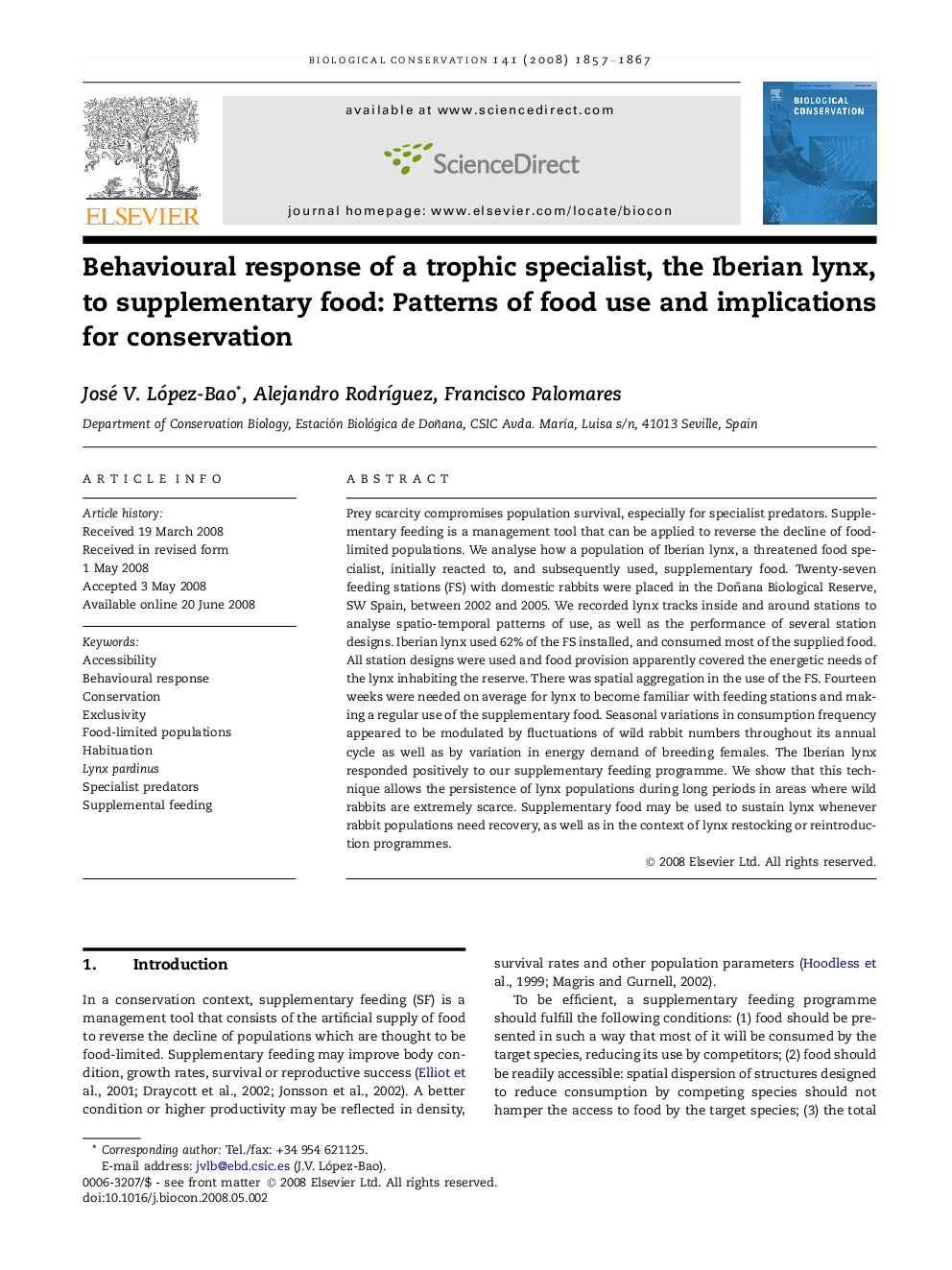| Article ID | Journal | Published Year | Pages | File Type |
|---|---|---|---|---|
| 4386558 | Biological Conservation | 2008 | 11 Pages |
Prey scarcity compromises population survival, especially for specialist predators. Supplementary feeding is a management tool that can be applied to reverse the decline of food-limited populations. We analyse how a population of Iberian lynx, a threatened food specialist, initially reacted to, and subsequently used, supplementary food. Twenty-seven feeding stations (FS) with domestic rabbits were placed in the Doñana Biological Reserve, SW Spain, between 2002 and 2005. We recorded lynx tracks inside and around stations to analyse spatio-temporal patterns of use, as well as the performance of several station designs. Iberian lynx used 62% of the FS installed, and consumed most of the supplied food. All station designs were used and food provision apparently covered the energetic needs of the lynx inhabiting the reserve. There was spatial aggregation in the use of the FS. Fourteen weeks were needed on average for lynx to become familiar with feeding stations and making a regular use of the supplementary food. Seasonal variations in consumption frequency appeared to be modulated by fluctuations of wild rabbit numbers throughout its annual cycle as well as by variation in energy demand of breeding females. The Iberian lynx responded positively to our supplementary feeding programme. We show that this technique allows the persistence of lynx populations during long periods in areas where wild rabbits are extremely scarce. Supplementary food may be used to sustain lynx whenever rabbit populations need recovery, as well as in the context of lynx restocking or reintroduction programmes.
